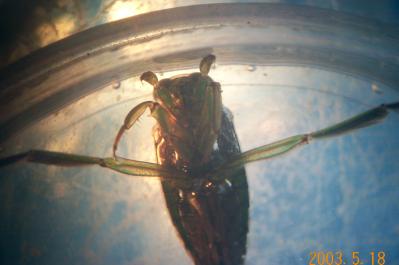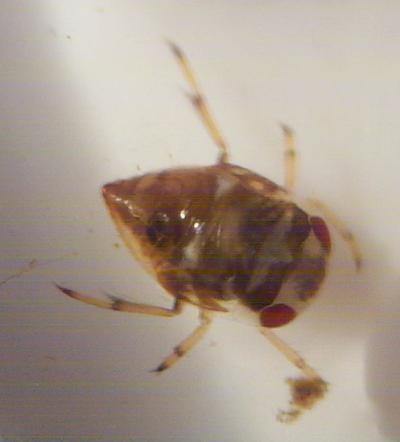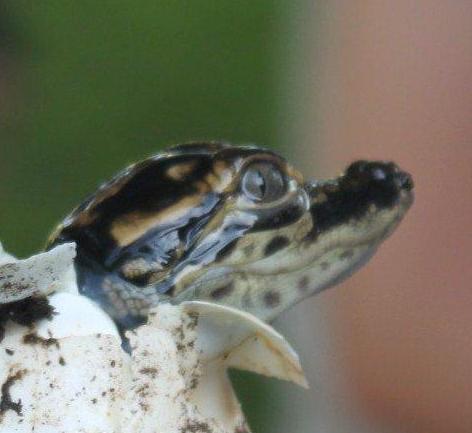|
Pond Life of Brazos Bend State Park
Backswimmers: Family Notonectidae
There are 2 very different representatives of the family Notonectidae in
the ponds at Brazos Bend State Park. Genus Notonecta, the full
sized backswimmer and genus Plea, the pigmy backswimmer. Both
are predaceous and both swim on their backs.
|
Backswimmers are ¾ to 1 inch long. Their backs is
keeled, coming to a pointed ridge in the center. The hind legs are
very long, and are flattened and equipped with hairs to make them
into effective paddles. The do not use their front 4 legs for
swimming, but keep them folded close to their bodies except when
catching prey.
|
|

Backswimmer, Notonecta undulata. Dorsal View
|
|
|
|
|
|

Backswimmer Notonecta undulata Ventral View
|
|
While swimming underwater, backswimmers keep a bubble of air
trapped under their wings to breathe
Backswimmers are often confused with water boatmen,
which they resemble. Water boatmen have a flatter
wider body, usually with horizontal bars on it. The water
boatman's head is wider and its hind legs are shorter.
|
|
|
|
The backswimmer is a fierce predator whose beak can inflict a
painful bite. It is sometimes called a water bee because it's bite
feels like a bee sting.
At one time, these were very common
in the park, particularly in the prairie pond. However specimens
have been very rare in recent years, probably due to reduced
rainfall.
|

Mouthparts of Notonecta undulata
|
|
|
|

Pigmy Backswimmer Plea striola
Its legs are not modified for swimming, but this does not keep
it from moving quickly in the water.
|
|
The pigmy backswimmer, Plea striola, is very common in
the park. It is usually only about 0.1 inches long. It swims on
its back but often is found crawling on its stomach. It normally
feeds on small crustaceans, but has been observed attacking larger
prey.
|
|

Pigmy Backswimmer Plea striola
|
|
The pigmy backswimmer resembles a very small creeping
water bug, but does not have the very powerful raptorial front
legs of the creeping water bug. Also, the body of the pigmy
backswimmer is much thicker proportionally than that of the
creeping water bug.
|
Updated: Sep 02, 2011
|


